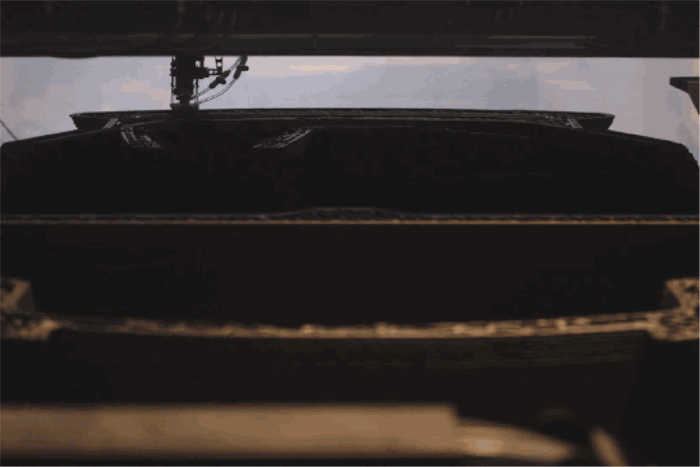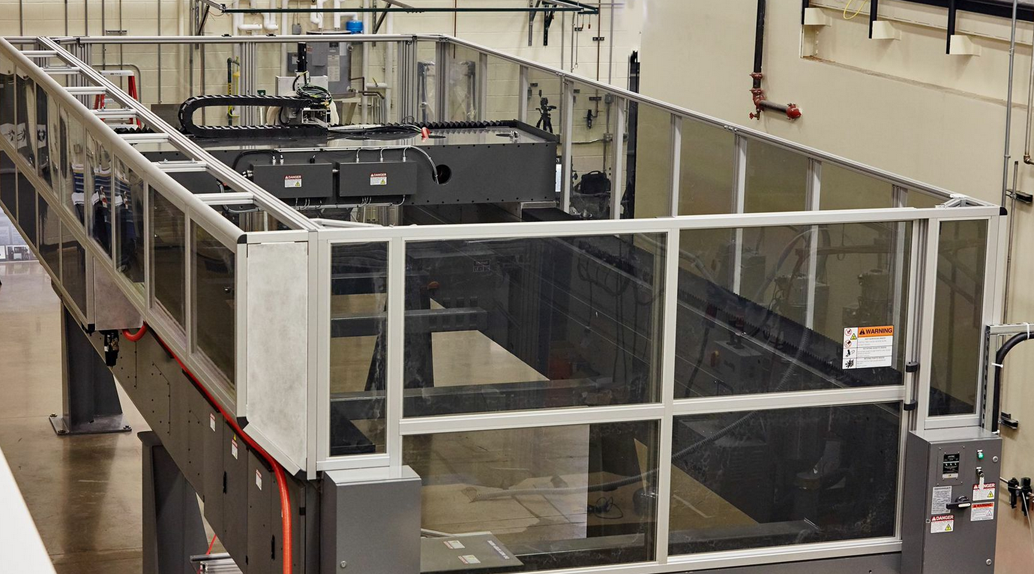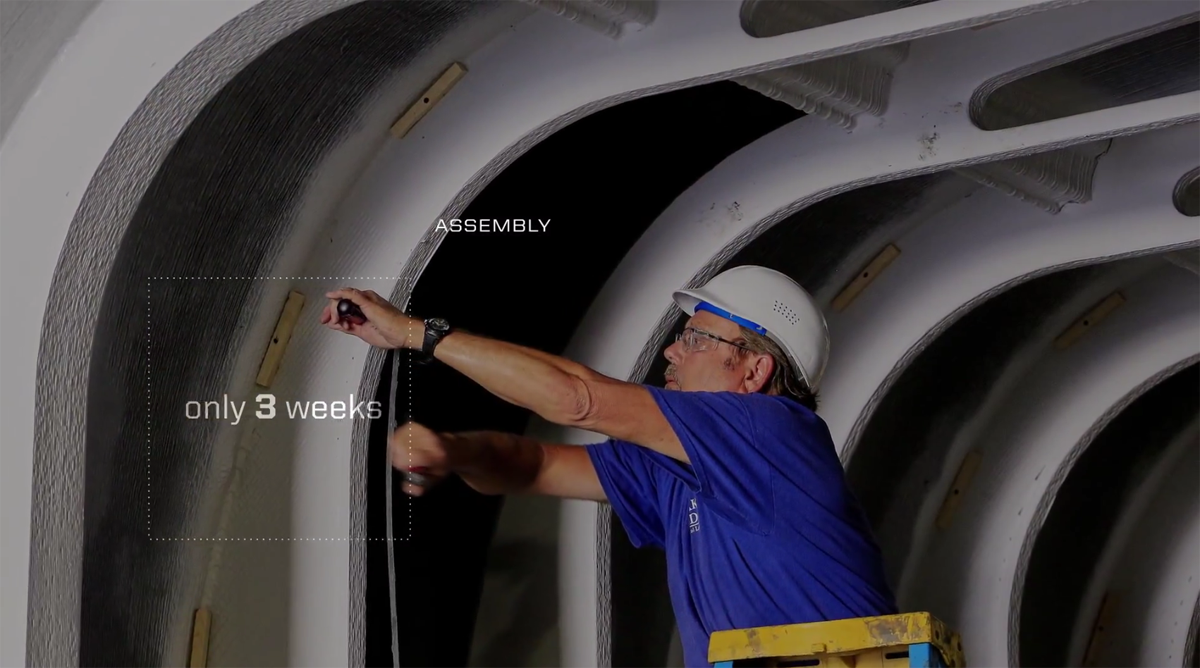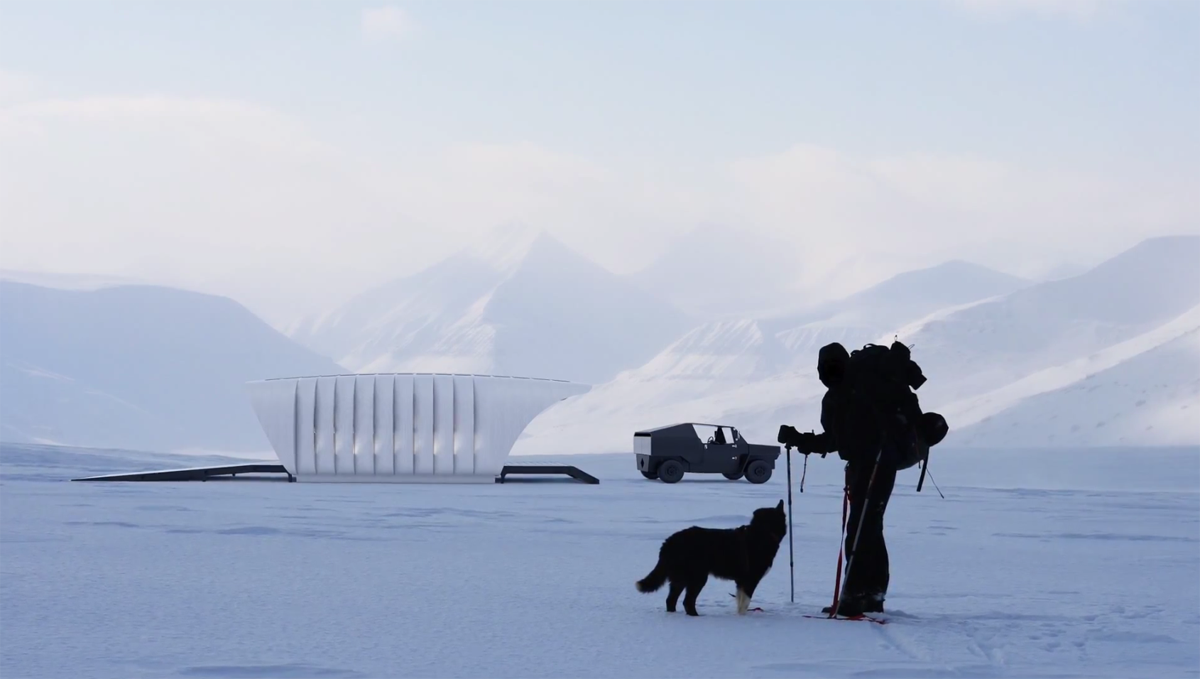3D printing is a technology that people are only beginning to understand. And, because of that, its true potential has only begun to be explored. So, when a company like Local Motors 3D prints a car or WinSun, in China, 3D prints a complete mansion, they’ve really only demonstrated a proof of concept, a simple exercise that proves to the world that 3D printing can be used to fabricate cars or houses. The true benefits that 3D printing will be bring to the automotive world or to the field of construction remain to be seen. And, as Oak Ridge National Laboratory today unveils their first experiments in the Additive Manufacturing Integrated Energy (AMIE) project, team leader Roderick Jackson knows that this is only the beginning.
Described in the most basic way possible, the AMIE project is a 3D printed car and a 3D printed house. As amazing as those two individual components are, it’s their interaction that makes them truly unique. As an engineer focused on energy, Roderick wants to see how those two modern living essentials can consume, produce, and share energy to form a symbiotic relationship that could grow into a fruitful energy future. He tells me, “A little more than a year ago, we started down this pathway in the lab of looking at how do we deal with the challenges that our nation has with energy. With buildings consuming about 40% of energy use and transportation consuming another 28% or so, how are we going to get from here to there, as we look to the future? And, if you also look at the fact that we have these extreme events – we have these 100 year storms it seems like every year – and they’re very disruptive to our energy needs. Look at Hurricane Sandy, at Hurricane Katrina. There’s a need for an energy solution that goes beyond the traditional approach to doing energy.”
Jackson’s solution, co-developed by ORNL and about 20 industry partners, was a home and a car that could feed energy to one another. On display at ORNL’s EERE Industry Day, is a complete integrated energy system, consisting of a 3D printed home – with a small kitchenette, entertainment area, and murphy bed – with an accompanying Printed Utility Vehicle (PUV). The home, on the one hand, receives energy from solar panels affixed to its roof, but, when the sun can’t provide electricity to the dwelling, the PUV, equipped with a natural gas-powered generator, generates that power.
This energy is passed from home to car or vice versa through a bidirectional wireless power transfer system, a pad besides the structure over which the PUV parks. Both the habitat and the auto also house their respective batteries for long-term storage, allowing one to feed off the energy supply of the other. “In essence, most of the time, we’re not at home,” Jackson says, “when the sun is out. Sun is available during the day, when we’re at work. So, electricity storage is needed. What we’re doing is taking a different approach to battery storage where the batteries we’re using for this project were once a part of a vehicle. And, when they’ve expended their useful life for a vehicle, they’re still useful for home energy storage, something else we’re demonstrating as well with this project.”
The work that went into all of this, and the technology underlying it, is hard to imagine. Even more difficult to imagine is that all of this was conceived, plotted out, and created in just one year. “A year ago, none of the partners were acquainted with each other or this project. This project evolved in less than a year.”
To produce the AMIE system that quickly was no easy task and, in fact, required taking an entirely new approach to both design and construction. See, as a species, we’ve been constructing our habitats the same way our ancestors have for thousands of years, leading Jackson to ask, “How do we turn the industry on its head?” To do that, ORNL would need a tool for rapid innovation. Fortunately, through their work with Local Motors, to develop the crowdsourcing auto manufacturer’s electric roadsters, Oak Ridge had the Big Area Additive Manufacturing (BAAM) machine. Created with Local Motors and Cincinnati Inc, the BAAM was capable of printing the frame for a complete vehicle live on the floor of the IMTS trade show in Chicago about a year ago, extruding ABS-carbon fiber composite over the course of 40 hours, before the body was milled to achieve a more refined look.
As big and fast as the BAAM prints, ORNL wanted it to print bigger and faster, leading to the production of a new machine dubbed Bertha, capable of extruding 100 pounds of material per hour with a 8’ x 20’ x 6’ build volume, even more massive than the original BAAM’s 7’ x 13’ x 3’ envelope. Bertha, though not designed specifically for the AMIE project, was perfect for demonstrating the potential of an additively manufactured, integrated energy system.
Not only would Bertha be able to 3D print a complete auto body, necessary for the AMIE project, but it could 3D print the pieces of a home, quickly and on demand, without any of the waste that goes into mass manufacturing parts. “We used over 20,000 pounds of material for this project,” the team leader says, “which is on a scale of 15-20 times what we used for the Shelby Cobra. We needed a higher throughput than what was available with the BAAM. With the size of the structure, you need that kind of throughput to meet the structural needs of the building.”
To do the actual design and assembly of the 3D printed home, ORNL partnered with two of the biggest names in the construction industry. Skidmore, Owings & Merrill LLP, one of the largest architecture firms in the world, laid out the blueprints for the structure and, after it was printed, Berkshire Hathaway’s Clayton Homes, the biggest manufacturer of modular homes in the United States, assembled the building’s modules at their facility. Jackson elaborates, “It kind of has a ring structure. The ring structure lends itself to certain structural capacities; without corners, we have rounded edges that you can really stress. And we were able to print them in half-rings. Each half ring has a radius of about 5 feet, with a height of about eleven or twelve feet. We assembled the rings at Clayton Homes and then the complete structure was bolted to the chassis here.”
“In about three working days – between the designers, the 3D manufacturer, and the material supplier for the ABS-carbon fiber composite – we were able to reduce the material and time needed to print the structure by 40%. This gives you the sort of picture of what rapid innovation can do for you, allowing you to share ideas, but also the actual files.”
The amount of effort needed to complete the project for Industry Day was audible in Roderick’s voice. So, when I asked him, several weeks back, when the the AMIE technology would make it out ORNL and to the rest of the populace, he sighed, “Well, we’re trying to make it to Industry Day first,” before going on to explain that they’d seek out the appropriate venues in which to test out the system.
The AMIE demoed, today, is only one astounding project that the Building Envelope Systems Research Group Leader hopes to dot a long and successful career. Growing up in a family of builders, with a dad whose ten brothers also built homes, Jackson has attained a number of degrees, all the way up to a doctorate, in energy and construction, all before joining Oak Ridge and playing a key role in the landmark Campbell Creek study. But, after AMIE, Jackson would rather not know what’s coming next.
“If people adopt what we demonstrate at Industry Day, then we’ve missed the mark,” he says. “What we want to demonstrate is the beginning of what’s next. What we want to do is get people thinking, get people to critique and throw ideas out there and say, ‘This is what we can do next.'” Describing as this demonstration as only AMIE 1.0 and looking forward to AMIE 2.0 and 3.0 and 4.0, he continues, “I can’t really say what this technology will look like in the future. In fact, I hope that I don’t know. I hope no one today can say where this will be used because I hope that this is the beginning.”









